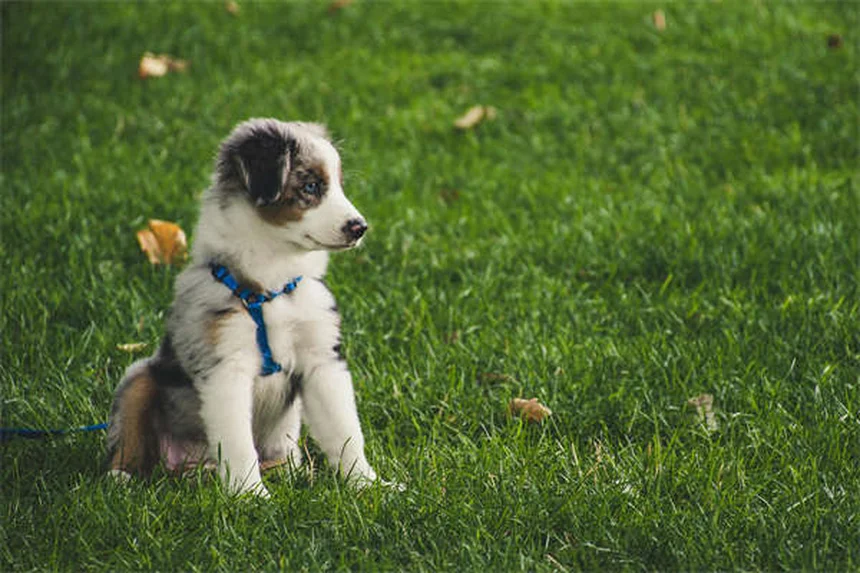Want to teach your cat cool tricks and good manners? Clicker training for cats is the answer! This fun, effective method helps your feline learn everything from sit to high-five while strengthening your bond. The secret? A simple plastic device that makes a clicking sound to mark good behavior, followed by a tasty reward. I've used this method with dozens of cats, and let me tell you - when you see your kitty responding to that click, it's pure magic!Here's the deal: cats learn through immediate positive reinforcement. When you precisely mark the moment they do something right (like using their scratching post instead of your couch) with a click, then follow with a treat, they quickly connect the dots. Pro tip: Start with behaviors your cat already does naturally, and you'll be amazed how fast they catch on. Ready to transform your mischievous furball into a well-trained companion? Let's dive in!
E.g. :Puppy Poop 101: Why Your Puppy Poops So Much & What's Normal
Advertisement
- 1、Why Clicker Training Rocks for Cats
- 2、Getting Started: Your Cat's First Lesson
- 3、Troubleshooting: When Your Cat Says "Nope"
- 4、Advanced Tricks: Taking It to the Next Level
- 5、Real-Life Success Stories
- 6、Your Turn: Let's Get Clicking!
- 7、The Science Behind Why Cats Respond to Clickers
- 8、Creating the Perfect Training Environment
- 9、Building a Stronger Bond Through Training
- 10、Taking Training Beyond the Basics
- 11、Common Myths About Cat Training
- 12、Making Training a Lifestyle
- 13、FAQs
Why Clicker Training Rocks for Cats
The Magic Behind the Click
Ever wondered why that little plastic box works like magic? A clicker is basically your cat's personal "good job!" notification. That crisp click sound becomes your cat's favorite noise once they realize it means treats are coming! Think of it like this: when your cat sits perfectly (instead of knocking over your coffee), you instantly click—that exact moment gets locked in their brain as "This action = delicious payoff."
Here's the science made simple: the click bridges the gap between the good behavior and the treat delivery. Imagine trying to toss a treat the millisecond your cat high-fives you—nearly impossible! The clicker solves this by being lightning-fast. Plus, it works across rooms—perfect for when your cat finally uses their scratching post instead of your couch. Pro tip: Always pair the click with an irresistible reward, like these fan favorites:
| Treat Type | Why Cats Love It | Best For |
|---|---|---|
| Churu paste | Lickable, high-value | Quick rewards |
| Freeze-dried chicken | Strong aroma | Distracted cats |
| Tiny tuna flakes | Smells like heaven | Advanced tricks |
Beyond "Sit": What Cats Can Really Learn
You might think cats only train us to fill their food bowls, but clicker training unlocks their hidden potential. My neighbor's cat learned to ring a bell for treats—now he does it so often they had to hide the bell! From keeping paws off counters to fetching toys, the possibilities are endless. The key? Start with behaviors they naturally do, like:
- Making eye contact with you
- Touching their nose to your hand
- Sitting when you hold a treat above their head
Getting Started: Your Cat's First Lesson
 Photos provided by pixabay
Photos provided by pixabay
Step 1: Make the Click = Yummy
Before teaching tricks, we need to program your cat's brain: click sound = treat incoming. Here's how:
1. Hold the clicker behind your back (so the sound doesn't startle them).
2. Click ONCE, then immediately toss a treat. Repeat 5-10 times.
3. Watch for signs they "get it"—like ears perking up at the click or looking expectantly at your treat hand.
Did you know some cats respond better to verbal markers like "Yes!"? Try both and see what your feline prefers. My cat Mr. Whiskers actually learned faster when I used a tongue click instead of a plastic clicker—go figure!
Step 2: Capture Natural Behaviors
Now for the fun part! Keep the clicker handy during your normal day. When you catch your cat:
- Voluntarily sitting
- Using their scratching post
- Gently playing (not biting)
CLICK-TREAT immediately! This "capturing" method teaches them that good things happen when they choose polite behaviors on their own. Soon, you'll notice them offering these actions more often—that's when you add a verbal cue like "Sit" right before they do it.
Troubleshooting: When Your Cat Says "Nope"
Common Hiccups (And Fixes)
What if your cat ignores the clicker? Let's solve that:
Problem: Runs away from the click sound
Solution: Muffle the clicker in your pocket at first, or switch to a quieter marker (pen clicks work). Pair every click with extra-amazing treats like salmon to build positive associations.
Problem: Only works for treats, then quits
Solution: Are your training sessions too long? Cats have the attention span of... well, cats! Keep sessions under 3 minutes. End while they're still excited—leave them wanting more.
 Photos provided by pixabay
Photos provided by pixabay
Step 1: Make the Click = Yummy
Actually, senior cats often excel at clicker training because they're less hyperactive than kittens. I once taught a 12-year-old tabby to give "paw" in just four sessions using extra-stinky liver treats. The secret? Adjust for their pace—older cats might need:
- Softer treats (no hard kibble for sore teeth)
- Shorter sessions (1-2 minutes max)
- Training during their most alert times (usually mornings)
Advanced Tricks: Taking It to the Next Level
Chain Behaviors Like a Pro
Once your cat masters basics, try linking actions together—this is how cats learn to do entire routines! For example, to teach "go to your bed":
1. Click-treat for looking at the bed
2. Click-treat for one step toward it
3. Gradually require more steps until they go all the way
4. Finally add the verbal cue as they're about to move
Why does this work? You're essentially creating a "video game" where each level gets slightly harder, but the rewards keep coming. Just remember—if your cat gets stuck at any step, go back to the last point they succeeded and rebuild from there.
The Toy Alternative
Not all cats are food-motivated. For these playful souls, replace treats with:
- 15 seconds with a feather wand
- A thrown ping-pong ball
- Brief access to a cardboard box (because cats)
The rules stay the same—click the moment they do the desired action, then immediately provide the play reward. This works wonders for cats on diets or those who just live for playtime.
Real-Life Success Stories
 Photos provided by pixabay
Photos provided by pixabay
Step 1: Make the Click = Yummy
My friend's cat Mittens used to raid the kitchen like a furry burglar. Using clicker training, they:
1. Clicked when Mittens voluntarily jumped down
2. Added the cue "Off" as she was descending
3. Eventually could say "Off" from across the room
4. Now she waits politely for invitations up (and gets clicked for that!)
The High-Five Champion
Ever seen a cat give high-fives? It's adorable and surprisingly easy to teach:
1. Hold a treat just above paw height
2. When they reach up, click-treat
3. Gradually raise your empty hand higher
4. Add the verbal cue as their paw lifts
5. Soon you'll have a feline celebrity at parties!
Your Turn: Let's Get Clicking!
Ready to start? Grab that clicker and some smelly treats—your cat's about to become the smartest kitty on the block. Remember: patience and consistency win the race. And hey, if my grumpy old cat can learn to play the piano (okay, it's just one key), yours can definitely master "sit." Happy training!
The Science Behind Why Cats Respond to Clickers
How Cat Brains Process the Click
You know that moment when your phone dings with a text? That's exactly how a clicker works in your cat's brain - it's an instant attention-grabber. Cats process sounds faster than verbal praise, which is why the clicker beats saying "good kitty" every time. Their brains release dopamine when they hear the click because they've learned it means something awesome is coming.
Here's something fascinating - cats can distinguish the clicker sound from other household noises with incredible accuracy. Studies show they respond to frequencies between 55-79 kHz, which is why that specific click cuts through all the background noise of your home. Fun fact: Some trainers use different clicker sounds for different behaviors, creating a whole language with their cats!
The Evolutionary Advantage
Ever wonder why this works so well with cats but not, say, goldfish? It all goes back to their hunting instincts. When wild cats catch prey, they get immediate satisfaction - the clicker mimics this instant reward system perfectly. We're basically hacking into their natural learning process that's been refined over millions of years.
Think about how cats learn in the wild - pounce successfully, eat immediately. Fail, go hungry. The clicker creates the same clear cause-and-effect relationship, just without the whole "eating mice" part. This is why it's so much more effective than punishment-based training - we're working with their natural wiring instead of against it.
Creating the Perfect Training Environment
Timing Is Everything
Here's where most beginners mess up - they click too late! The magic happens in that split second when your cat's butt hits the floor for a sit, not when you're digging for treats. I keep my clicker in one hand and treats in the other at all times during sessions. Pro tip: Practice your timing by clicking when your cat blinks - it'll sharpen your reflexes!
What if you're too slow? Don't sweat it - just wait for the behavior to happen again. Cats don't hold grudges for mistimed clicks like dogs might. They live in the moment, which is actually perfect for training. Just remember: click during the behavior, not after it's done.
Setting Up for Success
Location matters more than you think! Start in a quiet room without distractions - no TV, no other pets, no food bowls nearby. I like to use a bathroom for first sessions because it's usually neutral territory. As your cat gets better, you can gradually add distractions.
Here's a comparison of ideal vs. poor training locations:
| Great Spots | Why They Work | Spots to Avoid |
|---|---|---|
| Empty bathroom | Minimal distractions | Living room during family movie night |
| Bedroom with door closed | Familiar but controlled | Kitchen during dinner prep |
| Hallway with toys put away | Neutral territory | Near litter boxes or food stations |
Building a Stronger Bond Through Training
How Training Improves Your Relationship
Here's something trainers don't talk about enough - clicker training isn't just about tricks, it's about building trust. When your cat realizes you're this amazing treat-dispensing machine that understands their language, you become their favorite human. I've seen shy cats completely transform after just a few weeks of consistent training.
Think about it from your cat's perspective - suddenly they have a way to clearly communicate with you and get what they want. No more guessing games or frustration. This mutual understanding creates a deeper connection than any amount of petting could achieve. Plus, it gives bored housecats much-needed mental stimulation!
Reading Your Cat's Signals
Training will make you a cat body language expert faster than any book could. You'll start noticing subtle signs like ear twitches or tail flicks that indicate when they're getting frustrated or losing interest. This awareness spills over into everyday interactions, helping you avoid those surprise attacks when you pet them one second too long.
Here's a secret - cats actually train us way more than we train them. They're masters at figuring out what works to get our attention. With clicker training, you're just making the communication two-way instead of letting them run the whole show. Isn't it about time we understood them as well as they understand us?
Taking Training Beyond the Basics
Problem-Solving With Clickers
Clickers aren't just for tricks - they're amazing for behavior modification too. Scared of the vet? Click and treat for calm behavior in the carrier. Hate nail trims? Click for each toe touched. The possibilities are endless when you think outside the box.
I helped one client use clicker training to stop door-dashing. We clicked for sitting calmly when the door opened, gradually increasing the difficulty. Now Mr. Fluffy waits patiently instead of making a break for it. The key is breaking down the problem into tiny, clickable steps.
Clicker Games for Mental Stimulation
Who says training has to be all work? Turn it into playtime with these fun ideas:
- Hide treats around the room and click when they find them
- Set up mini obstacle courses to click for completing
- Teach them to "hunt" toy mice by clicking successful catches
The best part? These games tire cats out mentally, which means less midnight zoomies and more cuddle time. A win-win if you ask me!
Common Myths About Cat Training
"Cats Can't Be Trained Like Dogs"
Let's bust this myth once and for all - cats absolutely can be trained, just differently than dogs. While dogs aim to please us, cats aim to please themselves. That's actually an advantage once you understand how to make training rewarding for them.
The key difference? Dogs will work for praise, but cats need tangible rewards. That's not stubbornness - it's just how their brains are wired. Once you accept this, training becomes much easier. After all, wouldn't you prefer working for a paycheck rather than just a "good job"?
"My Cat Isn't Food Motivated"
I hear this all the time, and my response is always: have you tried better treats? Many cats turn up their noses at dry kibble but go crazy for stinky wet food or tiny pieces of cooked chicken. It's all about finding their currency.
Here's a quick test: offer your cat three different high-value treats and see which they prefer. Use that one exclusively for training to keep them motivated. Remember - even the pickiest eaters have something they can't resist, you just have to find it!
Making Training a Lifestyle
Incorporating Clicks Into Daily Life
The real magic happens when training stops being "sessions" and becomes part of your routine. I keep clickers in every room - by the couch, in the kitchen, even in the bathroom. That way, I can capture good behaviors whenever they happen naturally.
Some easy ways to integrate training:
- Click for calm behavior during your morning routine
- Reward for not begging while you eat dinner
- Reinforce using scratching posts instead of furniture
When to Phase Out the Clicker
Here's something most guides don't tell you - eventually, you won't need the clicker for every behavior. Once a trick is solid, you can gradually replace clicks with verbal praise or occasional treats. The behavior becomes habit, just like how you don't need a gold star for brushing your teeth every day.
But keep that clicker handy for new skills or refreshers! Even my most trained cats still love an occasional click session to keep their skills sharp. It's like their version of continuing education classes.
E.g. :Clicker Training: What tricks can cats learn? : r/CatTraining
FAQs
Q: How long does it take to clicker train a cat?
A: Most cats pick up clicker training basics within a few days to a week, especially when using high-value treats like Churu paste or tuna flakes. In my experience, younger cats (under 2 years) often learn faster, but I've successfully trained senior cats too - it just might take a few extra sessions. The key is keeping training sessions super short (2-3 minutes max) and ending on a positive note. Remember, we're working with cat attention spans here! Some behaviors like "sit" can be learned in a day, while complex tricks might take weeks of practice.
Q: Can you use clicker training to stop bad behaviors?
A: Absolutely! Clicker training isn't just for tricks - it's perfect for redirecting unwanted behaviors. Here's how I do it: instead of scolding your cat for scratching furniture, wait until they use their scratching post, then CLICK-TREAT immediately. This positive reinforcement teaches them where scratching is appropriate. I've helped clients stop counter-surfing, curtain-climbing, and even nighttime zoomies using this method. The trick is catching and rewarding the good behavior consistently.
Q: What if my cat is scared of the clicker sound?
A: Some sensitive kitties need the volume turned down - literally! Try these solutions that have worked for me: 1) Muffle the clicker in your pocket at first, 2) Use a quieter marker like a pen click or verbal "yes!", 3) Start by clicking from another room while someone gives treats. Gradually bring the sound closer as your cat gets comfortable. I once had a client whose cat responded better to the sound of a light switch clicking than a traditional clicker - get creative!
Q: Do I always have to use treats with clicker training?
A: While treats are the easiest reward starting out, you can eventually phase them out or alternate with other rewards. For play-driven cats, I recommend using short play sessions (15 seconds with a feather wand) as the reward. Some of my clients have success with petting or verbal praise too. The golden rule? Whatever reward you use must be something your cat truly loves. And remember - during initial training, every click must be followed by a reward, no exceptions!
Q: Can multiple people clicker train the same cat?
A: Yes! In fact, I encourage whole-family participation. The more consistent the training, the faster your cat will learn. Just make sure everyone: 1) Uses the same cues (don't have one person say "sit" and another say "down"), 2) Follows the click-treat rule religiously, and 3) Keeps sessions positive. I recommend holding a quick family training meeting to go over the basics. Bonus: kids often make great clicker trainers because they're naturally enthusiastic!

